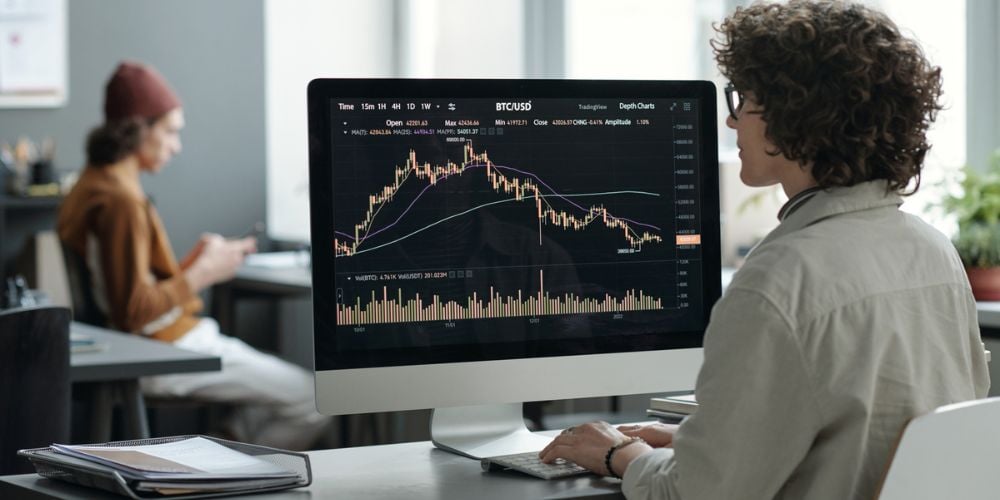Imagine a trading strategy so straightforward and robust that a group of novices could learn it and become hugely successful traders. That’s the legend of Turtle Trading, a method born from a debate and an experiment in the 1980s.
Created by famed commodities trader Richard Dennis, the Turtle Trading system has earned a place in market lore. This article digs into this historic strategy, its rules, and whether it still holds water in today’s fast-paced markets.
What is Turtle Trading?
The Turtle Trading saga begins with two commodity traders, Richard Dennis and William Eckhardt. Their conversation took an interesting turn when they pondered whether trading was a natural-born talent or a skill that could be taught.
To settle this, Dennis decided to teach a group of 23 novices about the markets, providing them with a specific set of rules to trade.
These novices were famously nicknamed ‘The Turtles’, a twist from Dennis’s visits to turtle farms in Singapore and his thought that traders could be cultivated as efficiently.
The result was nothing short of extraordinary. Within five years, these Turtles earned a combined profit of over $100 million, proving that with the right rules and discipline, successful trading could indeed be taught.

Core Principles of Turtlezzo Trading Strategy
The Turtle Trading strategy is built on a foundation of simplicity and discipline. It is a rule-based system, which means traders follow a predefined set of rules for every trade decision.
At its heart is trend following – the idea that markets will move in trends that can be predicted and capitalized upon.
An essential part of the strategy is position sizing. Turtles were taught to adjust the size of their trades based on the volatility of the market. This approach meant they could manage risk across different instruments.
Equally crucial was the implementation of stop-loss orders to exit a position at predetermined price levels to avoid larger losses.
Key Components of the Turtle Trading System
The nuts and bolts of the Turtle Trading system revolve around when to enter and exit the market. The strategy is clear-cut. It uses the concept of breakouts, where traders enter the market when the price moves beyond a certain range.
For exits, they employ stops determined by price changes against the trade or by reaching the target profit level.
A significant feature of Turtle Trading is the use of 20-day and 55-day moving averages to signal entry points.
The Turtles also relied on the ‘N’ concept, or True Range, a measure of market volatility. By calculating this, they could alter their position size in line with current market uncertainty.
Turtle Trading Rules
Richard Dennis handed the Turtles a compact list of rules to abide by. Key among these were directives on how to size positions and where to place stop-loss orders.
For a trade to be taken, it had to meet specific criteria set by these rules. Dennis placed emphasis on following the system without deviation, thus instilling discipline.
Understanding and applying these core rules is crucial. These rules kept the Turtles within the bounds of their strategy and helped them make decisions without the influence of emotion or subjective judgment.
Strategy Performance and Criticism
Historically, the Turtle Trading strategy reaped significant rewards for those who adhered to it during its early years. However, as with any trading approach, it has its critics.
Some argue that the strategy’s success was more a product of a particular market era than the potency of its rules.
Others are skeptical about the system’s scalability and application to today’s global markets due to the impact of technology and changes in market dynamics.
While these points warrant consideration, many traders still follow the principles of Turtle Trading, albeit with some modern refinements.
Turtle Trading in the Modern Market
The financial markets have evolved since Richard Dennis’s landmark experiment, but the foundational elements of Turtle Trading remain applicable. What has changed is the technology traders employ to implement the strategy, from algorithmic systems to advanced data analysis.
A comparison with modern strategies reveals that while Turtle Trading is more straightforward, it still can yield positive results.
It may not be the dominant force it once was, but its emphasis on discipline and systematic trading continues to influence current market methods.

Pro Tips for Implementing Turtle Trading
Implementing the Turtle Trading system requires a deeper understanding than just following a set of rules. Individuals need to grasp the rationale behind such a system and combine it with sound judgment.
Avoiding common mistakes like overtrading, underestimating the importance of stop-loss orders, and breaking the rules for emotional reasons can significantly increase one’s chance of success.
There are numerous tools and resources available today to help traders apply Turtle Trading principles. From trading software that can automate part of the process to communities that share tips and experiences, traders have much support to draw upon.
Frequently Asked Questions
Who can use the Turtle Trading system?
The system is versatile enough for both novice and experienced traders, but it requires strict adherence to its rules. Discipline is at the core of Turtle Trading, so those willing to follow the system meticulously are most suited to it.
Is Turtle Trading still effective in today’s market environment?
While the markets have evolved, the fundamental principles of trend following and disciplined risk management remain relevant. Traders have adapted the rules of Turtle Trading, finding success in different market conditions.
What are the biggest challenges of Turtle Trading?
The psychological aspect, such as the temptation to deviate from the rules during a losing streak, is one of the biggest challenges. Additionally, financial risks, like any trading strategy, must be managed through proper risk assessment and position sizing.
How does technology impact Turtle Trading?
Modern software can automate many aspects of Turtle Trading, including signal generation, backtesting, and risk management. This can help traders stick to the rules more efficiently.
Can Turtle Trading be applied to cryptocurrency markets?
Due to its high volatility, cryptocurrency trading is challenging. However, the Turtle Trading principles, centered on following trends and risk management, remain potentially beneficial even in these fast-moving markets.
The success of Turtle Trading lies not just in its rules but in the approach to the market it symbolizes – systematic, disciplined, and data-driven.
As markets continue to evolve, these aspects are timeless, capturing the essence of what it means to trade wisely.
Conclusion
The legacy of Turtle Trading continues as a testament to the power of a simple yet effective trading strategy. Its creation was an unprecedented event in financial history, and through its disciplined approach, it has left an enduring impact on the world of trading.
Whether you are trading stocks, forex, or commodities, understanding the Turtle Trading system is a step toward cultivating your own trading success.


 Tags:
Tags:










